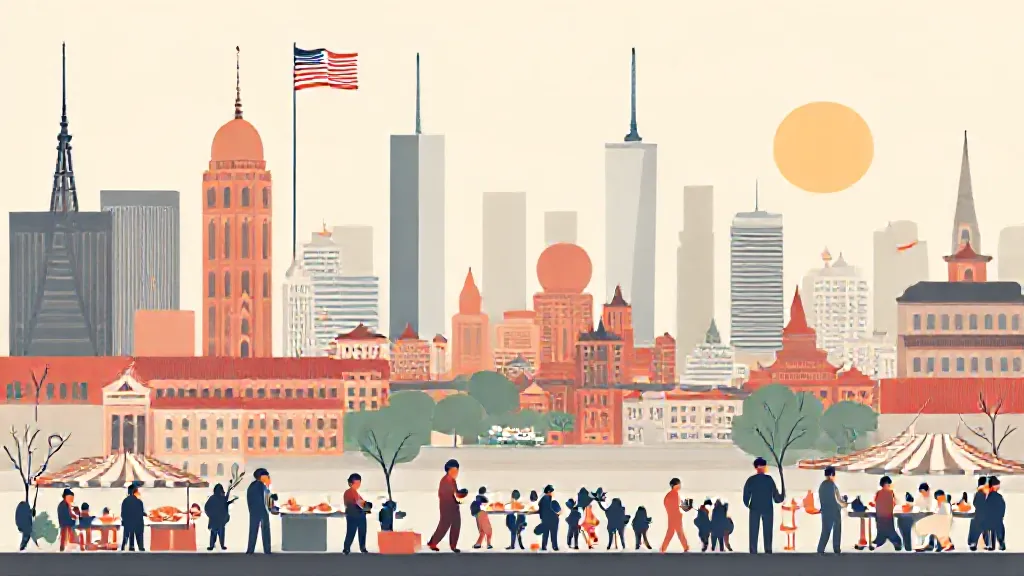Immigration has been a fundamental force in shaping American cities throughout history. From the early colonial days to the present, waves of immigrants have contributed to urban growth, cultural diversity, and economic development. Understanding this transformative process requires an examination of various historical periods and the roles immigrants played in the evolution of American urban landscapes.
The Colonial Era and Early Immigration
During the colonial era, cities such as New York, Philadelphia, and Boston began to form as centers of trade and commerce. The initial wave of immigrants included English, Dutch, and German settlers who brought their customs and traditions. These early immigrants established the foundations of American urban life, influencing the architecture, economy, and social structures of their respective cities.
The establishment of ports facilitated further immigration, leading to a more diverse population.
The Industrial Revolution and Urbanization
The 19th century marked a significant turning point in American immigration, coinciding with the Industrial Revolution. Millions of immigrants, primarily from Europe, flocked to American cities in search of jobs in factories and industries.
This influx led to rapid urbanization, as cities expanded to accommodate the growing workforce. Immigrants played a crucial role in building infrastructure, including railroads and factories, which were essential for the nation’s economic growth.
Cultural Contributions and Community Formation
Immigrants not only contributed to the economy but also enriched American culture.
Each wave brought unique traditions, languages, and cuisines, fostering a multicultural environment. Neighborhoods such as Little Italy and Chinatown emerged, where immigrants could maintain their cultural identities while integrating into American society. These communities became vital social hubs, providing support networks and preserving cultural heritage for future generations.
The Great Migration and African American Urbanization
The Great Migration, which occurred from the early 20th century to the 1970s, saw a significant movement of African Americans from the rural South to urban centers in the North. This migration transformed cities like Chicago, Detroit, and New York, as African Americans sought better economic opportunities and escaped racial discrimination. Their arrival contributed to the cultural landscape of these cities, giving rise to movements such as the Harlem Renaissance, which celebrated African American art, music, and literature.
Post-World War II Immigration Trends
After World War II, immigration patterns shifted again with the introduction of the Immigration and Nationality Act of 1965, which abolished restrictive quotas based on national origin. This change led to increased immigration from Latin America, Asia, and the Caribbean. American cities became even more diverse, with new communities establishing themselves and contributing to the local economy and culture.
Cities like Los Angeles and Miami became melting pots of various cultures, showcasing the ongoing influence of immigration.
Challenges and Resilience
Despite the positive contributions of immigrants to American cities, challenges have persisted. Issues such as housing shortages, economic inequality, and discrimination have affected immigrant communities.
However, immigrants have shown remarkable resilience, often overcoming obstacles through entrepreneurship and community organization. Their contributions to the local economy, particularly in small businesses, remain vital to the vibrancy of urban areas.
The Role of Policy in Shaping Urban Immigration
Government policies have significantly influenced immigration patterns and urban development.
Policies that promote inclusivity and support for immigrants can lead to thriving communities, while restrictive measures can hinder integration. Understanding the impact of these policies is crucial for comprehending the current state of American cities and the ongoing challenges faced by immigrant populations.
Conclusion: The Ongoing Legacy of Immigration
In conclusion, immigration has profoundly shaped American cities, contributing to their growth, diversity, and cultural richness.
The historical journey of immigrants reveals a narrative of resilience and adaptation, highlighting their essential role in the fabric of urban life. As America continues to evolve, the influence of immigration will remain a key factor in shaping the future of its cities.
